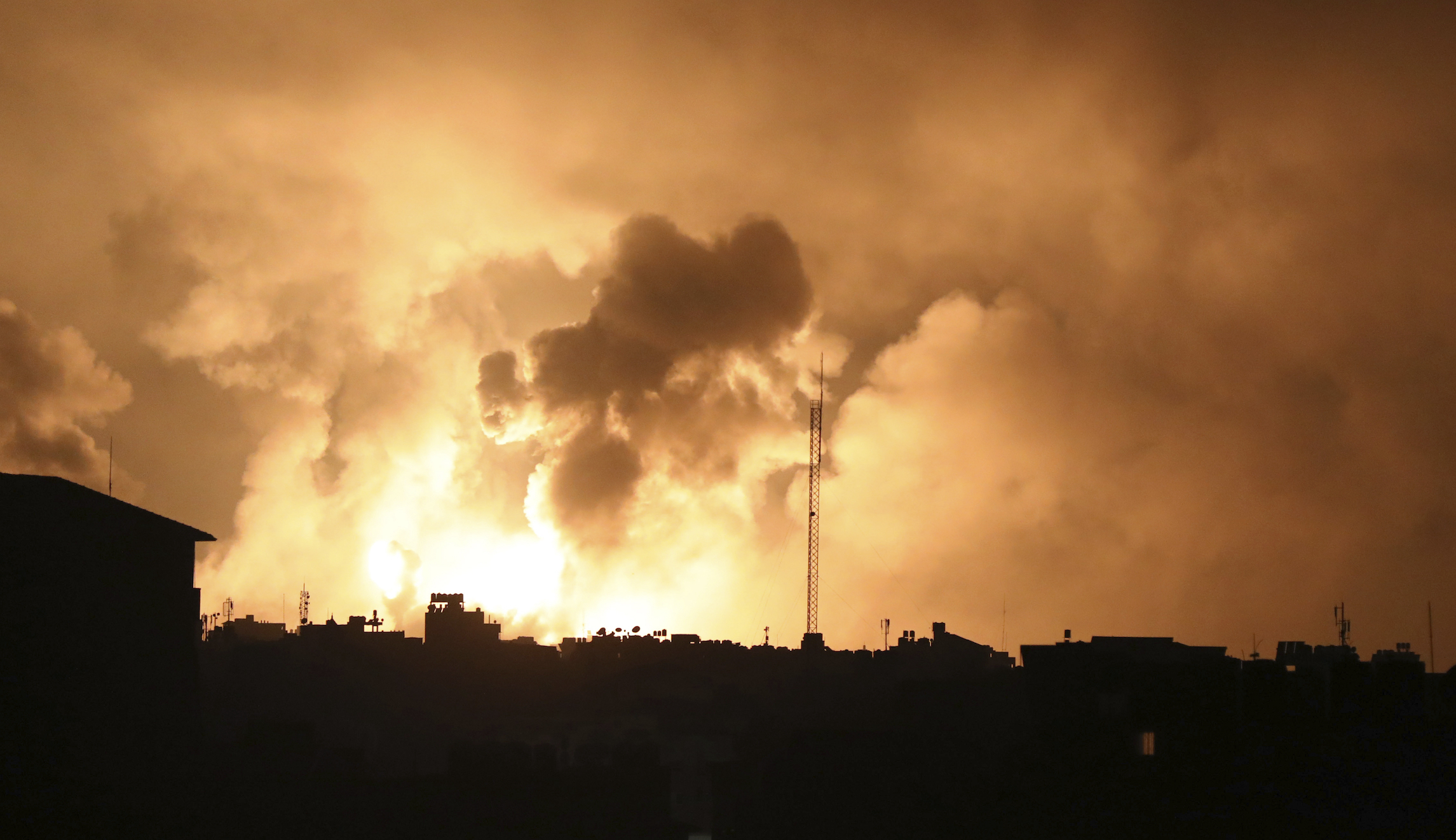The Israeli military has “increased” its military attacks in Gaza on Friday night local time, intensifying its air operations while also expanding ground activity.
The increase, which may represent the beginning of the offensive, comes nearly three weeks after the unprecedented Hamas-led terror attacks in southern Israel that left roughly 1,400 people dead and ultimately prompted the war.
BIDEN SIGNALS DESIRE TO WORK WITH NEW SPEAKER WHILE CAMPAIGN UNDERCUTS HIM AS ‘EXTREME’
“In recent hours, we have increased the attacks in Gaza,” Rear Adm. Daniel Hagari, the spokesman for the Israel Defense Forces, said. “The Air Force widely attacks underground targets and terrorist infrastructure, very significantly. In continuation of the offensive activity we carried out in the last few days, the ground forces are expanding the ground activity this evening. The IDF works powerfully in all dimensions in order to achieve the goals of the war.”
The Palestine Red Crescent Society said it has “completely lost contact with the operations room in Gaza and all our teams operating there,” according to a statement released Friday.
“We are deeply concerned about the ability of our teams to continue providing their emergency medical services, especially since this disruption affects the central emergency number ‘101’ and hinders the arrival of ambulance vehicles to the wounded and injured,” the statement said.
Paltel, a major Palestinian telecommunications company, announced that strikes on Friday night cut key communications infrastructure.
“The intense bombing in the last hour caused the destruction of all remaining international routes linking Gaza to the outside world,” the company said in a statement on the social media site X.
Over the past two nights, Israel conducted limited raids into Gaza to improve the conditions for the offensive.

Israeli leaders have talked about a ground invasion into the Gaza Strip for about two weeks, though the timeline has seemingly been pushed back amid a variety of factors, including the more than 200 hostages Hamas and other terror groups involved in the attacks took back to Gaza.
Israeli officials have said the aim of their military operation, the first stage of which included the launching of thousands of rockets into Gaza at Hamas’s leaders and infrastructure, is to destroy the terror group and remove them from power in Gaza.
When Israeli forces ultimately enter Gaza, they will face tough conditions. Hamas embeds itself into the civilian population, has a significant underground tunnel system, and will likely use booby traps and improvised explosive devices.
CLICK HERE TO READ MORE FROM THE WASHINGTON EXAMINER
“Hamas is a terrorist organization that has integrated themselves into the populations. … They locate their command posts under their hospitals. They do all kinds of things that really mix their military activities with civilian activities, which makes it extraordinarily difficult to distinguish back and forth,” retired Gen. Joseph Votel, the former commander of U.S. Central Command, previously told the Washington Examiner. “Hamas will have used a lot of booby traps and improvised explosive devices and other things they picked up from Iran over the years. And this will make it even more difficult.”
As Israel invades Gaza, eyes turn to northern Israel and its border with Lebanon. Hezbollah, a more sophisticated terrorist organization than Hamas, is based in southern Lebanon and could open up a second front for Israel. Hezbollah and Israel have already exchanged tit-for-tat rocket fire over the last couple of weeks, though there are continued concerns that the current conflict could broaden.

